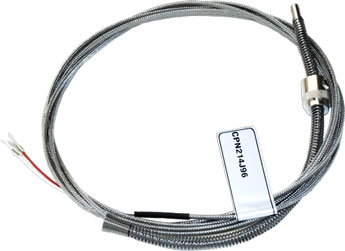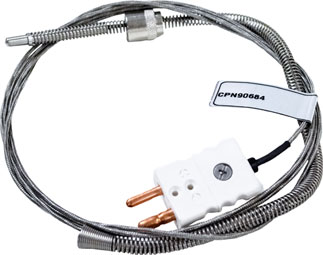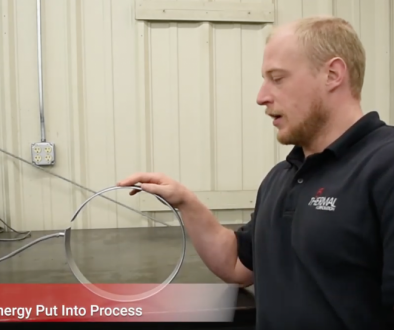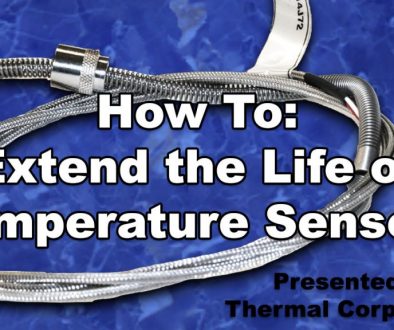Tips for Extending the Life of Temperature Sensors
Home > Blog Archive > Category: Industrial Heating Technology > Tips for Extending the Life of Temperature Sensors

Extending the Life of Temperature Sensors
These tips will apply to both thermocouples and RTDs
#1 Avoid Tip Deformation
- The actual sensing part of a temperature sensor is very close to the tip of the probe, so keeping the tip protected is extremely important. This is especially important when it comes to Resistance Temperature Detectors (RTDs). RTDs consist of a very small platinum resistor that is very fragile. Any hammering or mechanical force on the tip of an RTD can ruin the sensor. Thermocouple junctions can also be broken or become unreliable if they are deformed or disturbed. (Learn more on thermocouple junctions in our video on Youtube about the Different Types of Thermocouple Junctions.)
- Make sure that the probe fits securely into the bore that it is meant to go in. Temperature sensors should not have to be forced into place. If the sensors are not easy to install there is most likely some contamination (plastic overrun) in the bore hole that needs to be removed.
- Be careful with the temperature sensors when changing dies or servicing your machine. We see a lot of bent temperature sensors that no longer work correctly after being removed and reinstalled in a different die, because they were treated roughly during the transition.

#2 Avoid Contamination of Leads
- While temperature sensors are not as prone to contamination as our other heating products, such as mica band heaters and cartridge heaters, it can still happen. Often what we see is plastic that has been melted and somehow made its way onto the temperature sensor leads. Depending on the type of lead wire insulation, and the type of plastic, the plastic can create a “short” between the leads. This is really a secondary junction. This causes problems in thermocouples and RTDs. It is very important to not allow the leads to be contaminated.
#3 Avoid Over Temperature
- Published literature states that a J-type thermocouple is accurate up to 1382°F. However, keep in mind that this is the maximum temperature rating for the thermocouple junction. The insulation surrounding the thermocouple wire will not be rated to this high of a temperature. Often times what we see is that the fiberglass insulation around the thermocouple wire has got hot and burned through. This leads to a bare thermocouple wire that makes contact with the metal of a machine. This creates a secondary junction which then gives a bogus temperature reading and causes the machine to have problems.
- This same phenomenon can happen when using an RTD. In that case, the resistance that the controller sees changes drastically, thus giving a false temperature reading.
- If possible, run the thermocouple wire leads in open air where the temperature is much lower than the process temperature.
#4 Take Care with Lead Routing
- A high percentage of the temperature sensors that we see fail have done so because the leads have been damaged in some way. Machines have sliding or moving parts, and can easily pinch or nick leads if care is not taken when routing the leads.
- A stainless steel hose will help with deflecting mechanical force, but can still be crushed.
- A stainless steel over braid can help with mechanical wear, or rubbing, but again it is best to avoid this scenario, if possible.
- Teflon leads will be moisture resistant, but it is always better if temperature sensors can be kept dry. Thermocouple wire will rust if exposed to a high-moisture environment and, over time, will fail.
Written by Kyle Otte
Edited by Shelby Reece
Date Published: 02.20.2020
Last Updated: 02.20.2020


